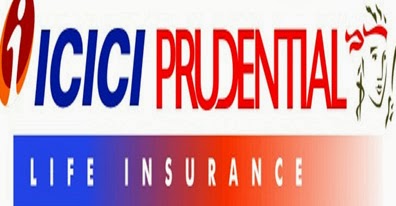Fixed Deposits (FDs) have always been a popular investment option among senior citizens. Those above 60 are offered the best FD rates because the fixed deposit interest rates for senior citizens is much higher than regular term deposits. At present, the term deposit rates offered to senior citizens range from 4% to 7.25%. The best FD rates offered are above 7% for those in this age group. Time deposits not only offer security but are also comparatively risk-free and come with guaranteed returns.
There are many types of deposits that a retiree can invest in, including the option to choose different interest payout options, where there is a regular flow of interest income. This is especially helpful to those who are retired and depend on income from interest.
Best FDs for senior citizens:
Not many people know that there are many types of fixed deposits for senior citizens and it is not limited to just one type. Among the term deposit options available in the market, we take a look at some that will best suit the interests of those above 60.
- Non-cumulative term deposits: This is one of the best investment options for those who are retired or above 60 because of the regular interest payout option. Here, the term deposit holder will be paid interest at specific frequencies. The payment may be made monthly, quarterly, half-yearly or even annually, depending on what the investor goes for. Here the principal remains intact but the interest that is earned is credited back to to the customer’s bank account at regular intervals. This is a good type of supplementary income for those who are retired and need some kind of secondary income to run the household.
- Sweep in deposit: Not many people know about sweep in deposits. They offer the best FD rates, which are comparatively higher than those offered on regular savings accounts or term deposits. A sweep in deposit is nothing but a type of term deposit account that offers the account holder the liquidity of a savings account but also the benefits of a fixed deposit. For example, if the maximum balance in a savings account is Rs.20,000 and you have Rs.80,000, the remaining Rs.60,000 will be automatically converted into a fixed deposit. So, if a customer uses Rs.25,000, the additional Rs.5000 will be adjusted from the deposit and still continue to earn interest on the remaining amount.
- Tax saver deposits: This is a type of time deposit that is very different from other deposits because it exclusively offers a tax benefit, which is ideal for senior citizens. These types of term deposits will offer a retiree the best tax benefit while simultaneously earning an interest on the same investment. A tax exemption can be claimed under Section 80C of the Income Tax Act for up to Rs.1.5 lakh. A minor drawback here is that the scheme comes with a lock in period of a minimum of 5 years.
- Reinvestment scheme: These deposits not only offer the best FD rates but also allow the investor to earn the maximum possible returns on their investment. Here, the interest that is earned is added back to the principal and compounded. Typically, the interest earned on these types of deposits are much higher, making it a very lucrative, yet safe, investment option for senior citizens.
Why senior citizens should invest in fixed deposits
- Best FD rates: Fixed Deposit interest rates for senior citizens are much higher than those offered to regular deposit holders. Therefore, for a senior citizen, a term deposit pays more money when compared to a regular individual.
- Interest as income: The interest income that is earned from non-cumulative deposits are a good source of income for those above 60. The best part is that you can have more than 1 deposit and earn good income from the same. For example, if a senior citizen couple have 2 schemes each and each earns an interest amount of Rs.2000 per month, the monthly income from fixed deposits will add up to Rs.8000. Therefore, the total income that is gained from all the four term deposits will be very beneficial.
- Safety net: There is almost no element of risk involved in a time deposit when compared to other types of investments such as shares or mutual funds. Though the rate of return may not be as lucrative, this is a best bet for senior citizens because it is not advisable for people in that age group to take too many financial risks.
- Liquidity: The best part about a fixed deposit is that you can withdraw money prematurely at any point of time. This is a great advantage for senior citizens because it gives them the advantage of liquidity. In case of a medical emergency or a financial problem, the time deposit can be broken easily to meet needs without any hassle.
- Loan/overdraft facility on time deposit: The best part about an FD is that you do not have to break it at the time of emergency if you want to retain the deposit account. Almost all banks offer customers the facility to take a loan of up to 90% on the deposit amount and still continue to earn interest on the remaining. The best part about this is that the interest rate charged for such loans are much lesser when compared to regular loan rates. For example, if you are earning an interest rate of 6% on your FD, the bank will charge not more than 2% to 3% for the loan. Therefore, the rate of interest charged for the loan will be around 7% to 9%. This is much lesser than loan interest rates which typically average around 12% to 16% in most cases.
How to choose the best FD
- Check the credit rating of the bank or financial institution that is offering the time deposit
- Do a background check of the bank/company’s repayment history, balance sheet and financial position
- Try to avoid unrated time deposit schemes and do not be lured by unreasonably high interest rates
- Usually bank deposits are secure and also come with deposit insurance. So choose bank FDs over company FDs
To sum it up, there are numerous benefits that senior citizens can get from an FD. It is a wise option for people in that age group.


 Financial experts usually advise you to get a life insurance and a medical insurance policy as soon as you get a job. Life insurance policies are supposed to take care of your dependents in your absence. Many young professionals may not feel the need to buy life insurance right after getting a job because we do not have any liabilities. However, over time our liabilities do increase as we get married and have children. Securing the future of our kids and spouse is our utmost responsibility and life insurance plans help us to some extent.
Financial experts usually advise you to get a life insurance and a medical insurance policy as soon as you get a job. Life insurance policies are supposed to take care of your dependents in your absence. Many young professionals may not feel the need to buy life insurance right after getting a job because we do not have any liabilities. However, over time our liabilities do increase as we get married and have children. Securing the future of our kids and spouse is our utmost responsibility and life insurance plans help us to some extent. Insurance companies want to sell policies to healthy individuals as it would lead to lesser liability. The number of claims would be fewer and they stand to make better profits. Individuals in their 20s are more or less in the pink of health which is why they are considered to be the best customers for insurances. Their policies are approved quite easily without too many health check-ups. As you grow older, your probability of contracting a disease like diabetes or high blood pressure increases which may make insurance companies sceptical about granting you a policy. In case of
Insurance companies want to sell policies to healthy individuals as it would lead to lesser liability. The number of claims would be fewer and they stand to make better profits. Individuals in their 20s are more or less in the pink of health which is why they are considered to be the best customers for insurances. Their policies are approved quite easily without too many health check-ups. As you grow older, your probability of contracting a disease like diabetes or high blood pressure increases which may make insurance companies sceptical about granting you a policy. In case of  Life insurance policies can be used as collateral against different kinds of loans. The loan granted to you is proportional to the surrender value of the policy. The earlier you start, the bigger is the corpus you accumulate in your insurance policy which would in turn lead to a larger sum being sanctioned. For instance, if you want a car loan of Rs 4 lakhs at the age of 30, you have to have at least Rs 4 lakhs in your insurance policy for using it as collateral. Unless you start early, accumulating this sizeable sum would be difficult for you.
Life insurance policies can be used as collateral against different kinds of loans. The loan granted to you is proportional to the surrender value of the policy. The earlier you start, the bigger is the corpus you accumulate in your insurance policy which would in turn lead to a larger sum being sanctioned. For instance, if you want a car loan of Rs 4 lakhs at the age of 30, you have to have at least Rs 4 lakhs in your insurance policy for using it as collateral. Unless you start early, accumulating this sizeable sum would be difficult for you.



